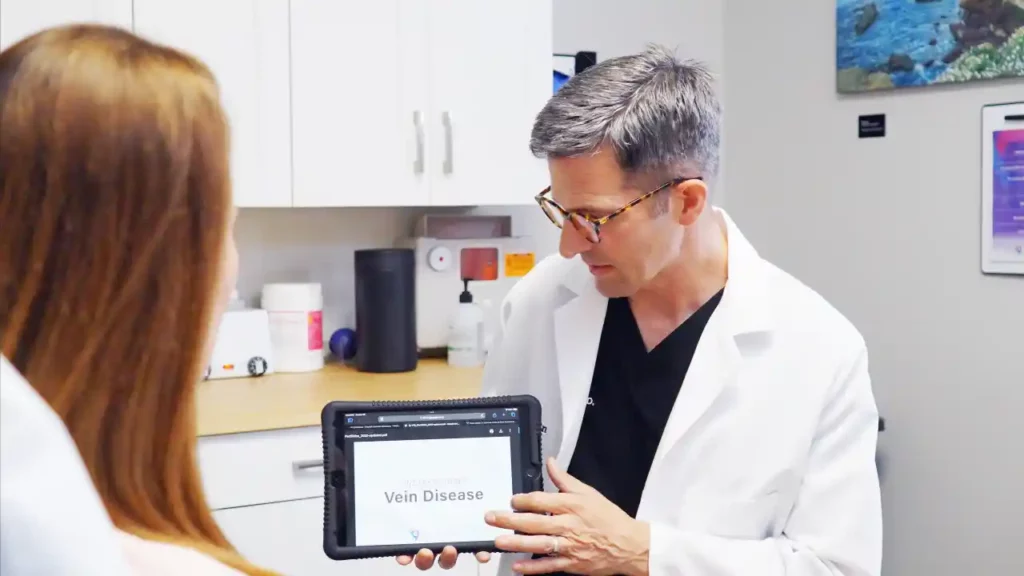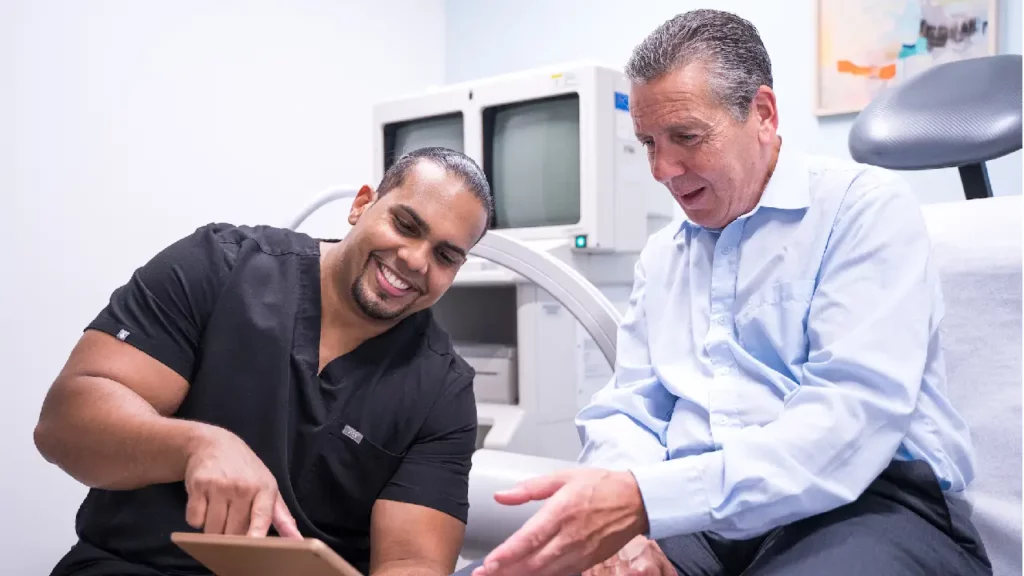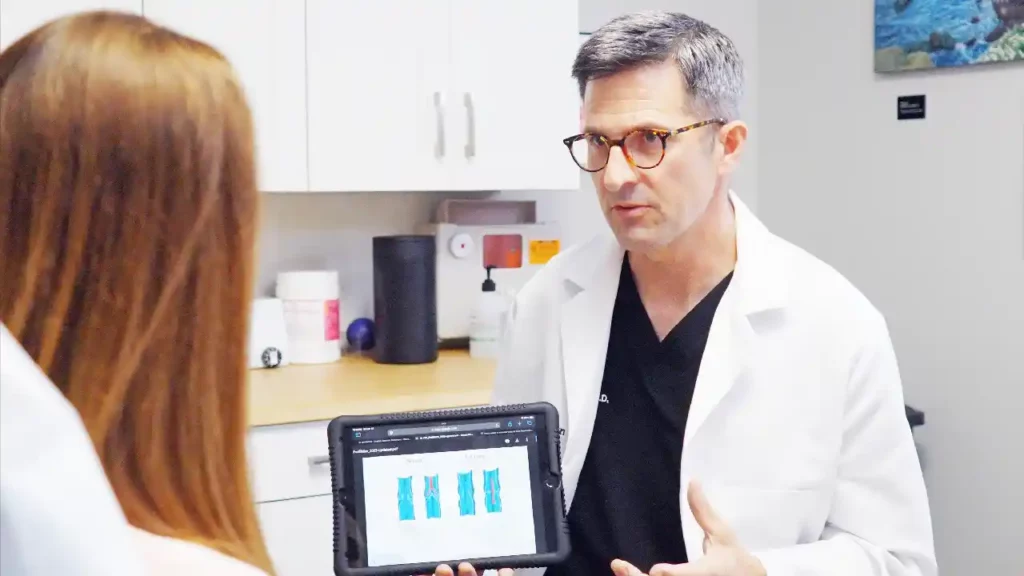Are you tired of dealing with the discomfort and unsightly appearance of varicose veins in your legs? You’re not alone. Varicose veins affect millions of people worldwide, particularly women. Fortunately, there are steps you can take to prevent them from developing or worsening. As board-certified vein doctors, we at Vein Doctor for Women understand the importance of proactive vein care. In this guide, we share our expert tips on how to prevent varicose veins in your legs, helping you maintain healthy and beautiful legs for years to come.
1. Stay Active and Exercise Regularly
One of the most effective ways to prevent varicose veins is to stay active and incorporate regular exercise into your routine. Engaging in activities such as walking, swimming, cycling, or yoga helps improve blood circulation in your legs, reducing the risk of vein issues. Aim for at least 30 minutes of moderate-intensity exercise most days of the week. Even simple activities like taking the stairs instead of the elevator or stretching during breaks at work can make a significant difference in promoting healthy veins.
2. Maintain a Healthy Weight
Maintaining a healthy weight is crucial for overall health and can also help prevent varicose veins. Excess weight puts added pressure on your veins, making it harder for blood to circulate properly. This increased pressure can lead to vein damage and the development of varicose veins. Focus on eating a balanced diet rich in fruits, vegetables, lean proteins, and whole grains, and limit your intake of processed foods and sugary snacks. Combine healthy eating habits with regular exercise to achieve and maintain a healthy weight for your body.
3. Elevate Your Legs
Elevating your legs is a simple yet effective way to alleviate pressure on your veins and improve blood flow. Whenever possible, elevate your legs above heart level to encourage the blood to flow back towards your heart. This can be especially beneficial after prolonged periods of sitting or standing. Try propping up your legs with pillows while lying down or using a footrest under your desk at work. Taking short breaks throughout the day to elevate your legs can help prevent varicose veins and relieve any discomfort or swelling.
4. Wear Compression Stockings
Compression stockings are specially designed to apply pressure to your legs, helping to improve circulation. These stockings provide graduated compression, meaning they are tightest at the ankle and gradually loosen as they move up the leg. This encourages blood to flow upwards towards the heart, reducing the risk of blood pooling in the veins and causing issues. Wear compression stockings regularly, especially if you spend long hours sitting or standing, or if you’re at a higher risk of developing varicose veins due to genetics or lifestyle factors.
5. Avoid Prolonged Sitting or Standing
Prolonged periods of sitting or standing can contribute to the development of varicose veins by increasing pressure on the veins in your legs. If your job requires you to sit or stand for long stretches of time, make an effort to take regular breaks to move around and stretch your legs. When sitting, avoid crossing your legs, as this can restrict blood flow. If standing for extended periods is unavoidable, shift your weight from one leg to the other.
6. Stay Hydrated
Drinking an adequate amount of water is essential for maintaining healthy veins and preventing varicose veins. When you’re properly hydrated, your blood is less likely to thicken, making it easier for it to flow through your veins. Aim to drink at least eight glasses of water per day, and limit your consumption of caffeinated and alcoholic beverages, as these can dehydrate your body. If you struggle to drink enough water throughout the day, try carrying a reusable water bottle with you and setting reminders to take sips regularly.
7. Follow a Low-Sodium Diet
Excess sodium in your diet can lead to water retention and swelling, putting added pressure on your veins and increasing the risk of varicose veins. To prevent this, aim to follow a low-sodium diet by minimizing your intake of processed and packaged foods, which are often high in sodium. Instead, opt for fresh, whole foods like fruits, vegetables, lean proteins, and whole grains. By reducing your sodium intake, you can help keep your veins healthy and prevent varicose veins from forming.
8. Practice Leg Exercises
Incorporating specific leg exercises into your daily routine can help strengthen the muscles surrounding your veins, improving circulation and reducing the risk of varicose veins. Focus on exercises that target the calf muscles, such as calf raises, heel raises, and ankle flexion and extension. These exercises help pump blood back toward the heart, preventing it from pooling in the veins. Aim to perform leg exercises for at least 15-20 minutes each day, either as part of a workout routine or during breaks throughout the day.
9. Practice Good Posture
Believe it or not, your posture plays a significant role in the health of your veins. Poor posture can lead to increased pressure on your veins, which affects proper blood flow and potentially contributes to the development of varicose veins. To prevent this, make a conscious effort to maintain good posture throughout the day, whether you’re sitting, standing, or walking.
When sitting, keep your feet flat on the floor and avoid crossing your legs. Sit back in your chair with your back straight and shoulders relaxed. Use a supportive chair or cushion to maintain proper alignment. When standing, distribute your weight between both feet and avoid locking your knees. Engage your core muscles to support your spine and keep your shoulders back. By maintaining proper alignment, you can support healthy blood flow in your veins and reduce the risk of developing varicose veins in your legs.
10. Treat Chronic Venous Insufficiency Proactively
Chronic Venous Insufficiency (CVI) is a condition where the veins in your legs fail to adequately return blood to your heart, leading to symptoms like swelling, pain, and varicose veins. Treating CVI proactively is crucial for preventing the development or worsening of varicose veins. If you experience symptoms such as leg heaviness, swelling, or visible veins, it’s essential to seek professional help from a board-certified vein doctor.
At Vein Doctor for Women, we offer evaluations and personalized treatment plans to address CVI and prevent associated complications like varicose veins. Treatment options may include minimally invasive procedures such as endovenous laser ablation (EVLA) or VenaSeal, which close off damaged veins and redirect blood flow to healthier ones. By addressing CVI, you can mitigate the risk of varicose veins and improve the overall health of your legs.

Risk Factors for Varicose Veins & CVI
While varicose veins can affect anyone, certain factors increase your risk of developing this condition. Recognizing these risk factors can help you take proactive steps to prevent varicose veins or seek early treatment if necessary. Here are some common indicators that you may have a higher risk of varicose veins:
- Family History: Genetics plays a significant role in vein health. If you have a family history of varicose veins or venous insufficiency, you’re more likely to develop them yourself.
- Age: Varicose veins become more common with age as the valves in your veins weaken. While you can’t stop aging, you can mitigate its effects by adopting healthy habits early on.
- Gender: Women are more prone to varicose veins than men, primarily due to hormonal fluctuations during puberty, pregnancy, and menopause. Pregnancy, in particular, increases pressure on the veins, making women more susceptible to developing varicose veins.
- Pregnancy: As mentioned earlier, pregnancy puts added pressure on the veins in the legs, increasing the risk of varicose veins. Hormonal changes during pregnancy also contribute to vein dilation. If you’re pregnant or planning to become pregnant, take proactive measures to support vein health, such as wearing compression stockings.
- Obesity or Overweight: Excess weight puts additional pressure on the veins, making it harder for blood to circulate properly. This increases the risk of varicose veins.
- Prolonged Standing or Sitting: Jobs or lifestyles that require prolonged periods of standing or sitting can impair circulation and increase the likelihood of varicose veins. If you have a sedentary job, take frequent breaks to move around and stretch your legs.
Schedule Your Consultation
Preventing varicose veins in your legs requires a combination of lifestyle modifications and proactive vein care. Remember to consult with our board-certified vein doctors if you have concerns about your vein health or if you notice any symptoms of vein issues. With the right preventative measures and professional guidance, you can maintain optimal vein health.
At Vein Doctor for Women, our vein doctors can evaluate your symptoms and discuss your medical history to curate a personalized lifestyle regimen to help you maintain optimal vascular health and mitigate the risk of chronic venous insufficiency and varicose veins. Please schedule a consultation with our vein doctors today.






